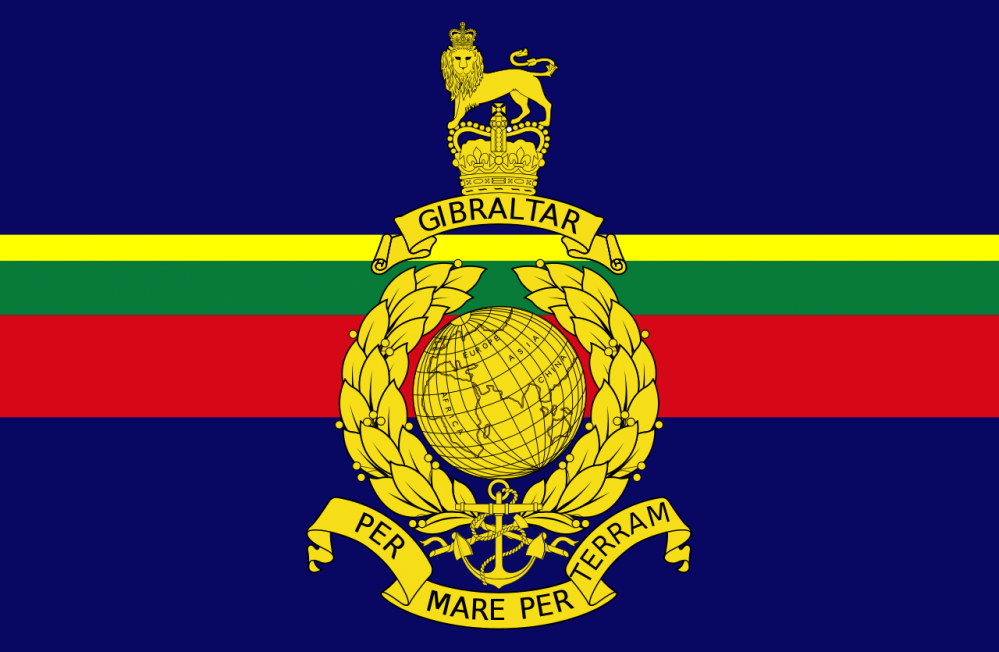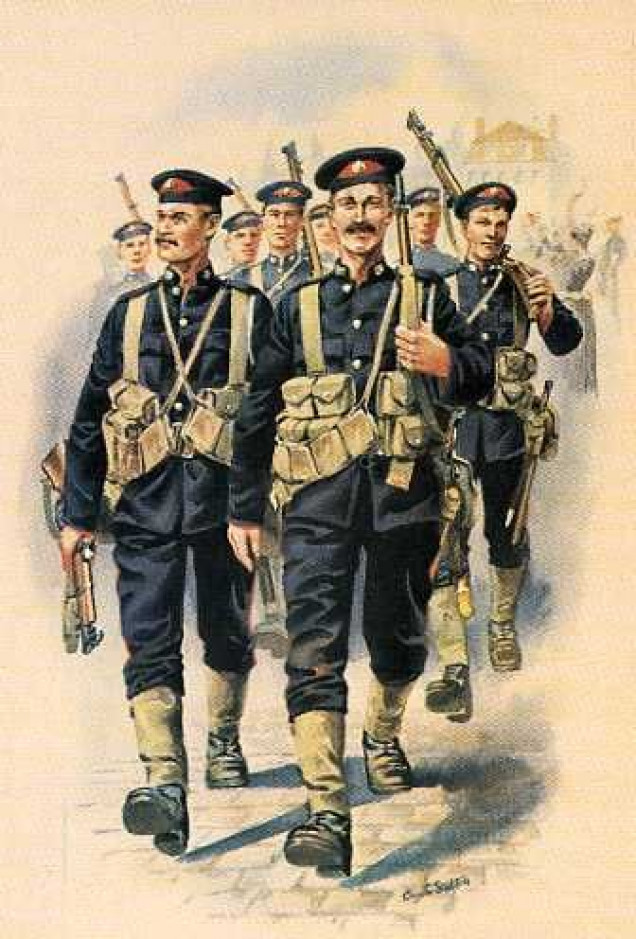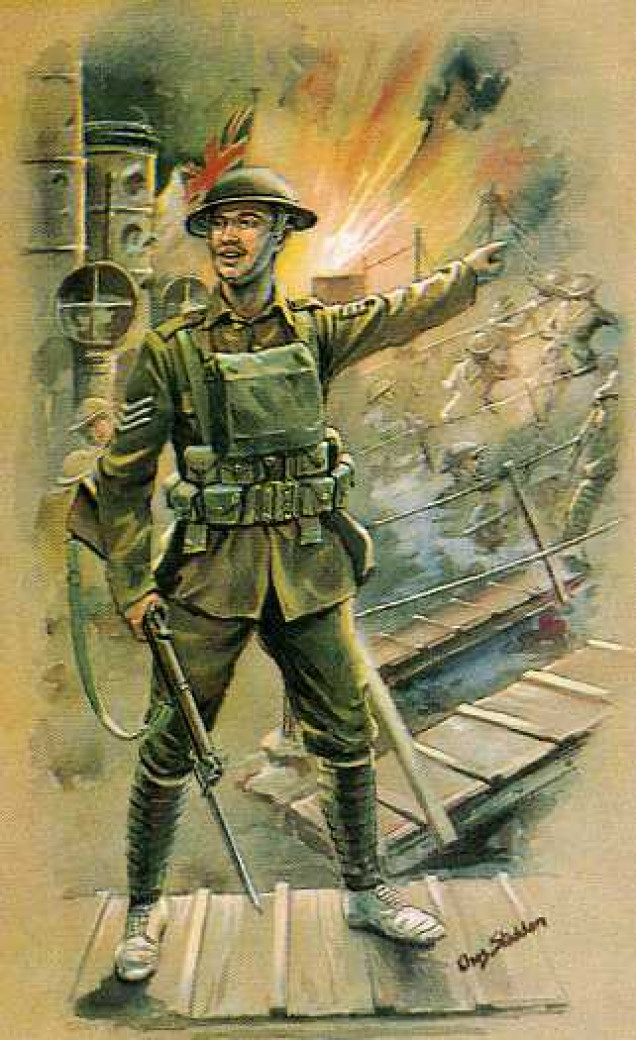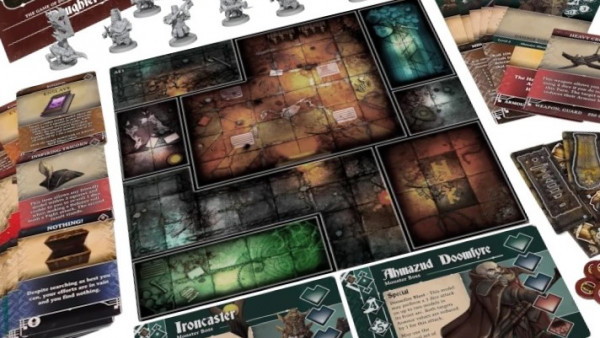
Per Mare Per Terram
The Great War and the Interwar Years
Entering the 20th Century you’ll find the Royal Marines more difficult to identify as all armies moved towards drab and camouflaged uniforms to better protect their men from the new ‘modern’ warfare. An important not, however, is that along with ceremonial dress uniforms, the early part of the 1900’s has a type of uniform refereed to as Home Service uniform that we will not cover too much simply because it is not a ‘battle’ uniform that is important for wargamers.
 In the early years of the war, the Royal Marines appear to have worn the blue uniforms of their naval service and formed the much more 'professional' brigade of the Naval Division that was later in the war passed to Army control and dubbed the 63rd (Royal Naval) Division.
In the early years of the war, the Royal Marines appear to have worn the blue uniforms of their naval service and formed the much more 'professional' brigade of the Naval Division that was later in the war passed to Army control and dubbed the 63rd (Royal Naval) Division.Throughout the war the RMLI fought as light infantry and the Royal Marine Artillery manned the big guns for the division and would switch from the more conspicuous blues to the less visible khakis of the regular army. As will become commonplace in combat after the Great War, the Marines will be commonly recognised by Corps symbols on their uniforms that are typically not viable at smaller scales and simple decals at larger ones. If you wish to do the Naval Division, as a whole, for this conflict then the non Marines part of the division do have a fair number of differences that you could look up.
 For example, this chap is wearing the exact same kit as the regular army at the time, but is marked as a Royal Marine by his various badges that, at most scales, are a little hard to make out.
For example, this chap is wearing the exact same kit as the regular army at the time, but is marked as a Royal Marine by his various badges that, at most scales, are a little hard to make out.In the aftermath of the war, the British Government looked to try to save money on it’s war spending and so in the the years following peace the Royal Marine Light Infantry and the Royal Marine Artillery were merged together with the Royal Marine Artillery losing their purpose and requiring the Corps to rely on Royal Artillery units for support (a system that sort of still stands today). While it’s not relevant to minis, this is why the Royal Marines have the dress uniform they do; they kept the blue of the artillery branch and kept the red for the Officer’s Mess.
As it going to be typical from here on out, Marines can usually be represented by the standard infantry with very few exceptions, though if you wished to represent the Naval Division at the onset of war you will have to look for some specific minis that may be hard to find.

































![TerrainFest 2024! Build Terrain With OnTableTop & Win A £300 Prize [Extended!]](https://images.beastsofwar.com/2024/10/TerrainFEST-2024-Social-Media-Post-Square-225-127.jpg)








































Leave a Reply